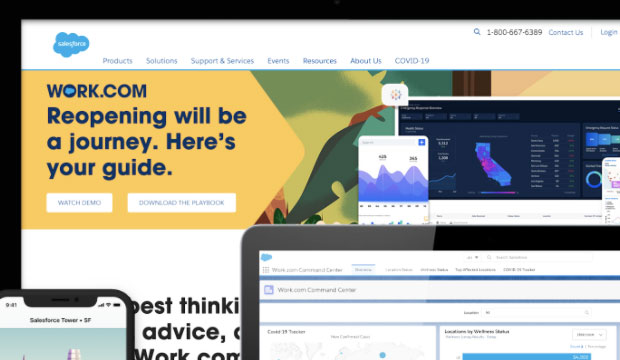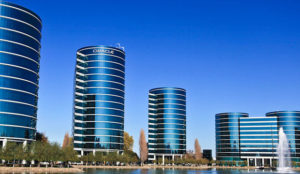Salesforce announced big numbers in all of its financials when it reported its FYQ2 results this week. But we’re accustomed to the CRM company reporting good results, so the biggest news to my mind comes from elsewhere: The company also announced that as of August 31, it will replace Exxon Mobil in the Dow Jones Industrial Average.
It’s often remarked that the 30-stock index that sets the parameters for much of our economic discussion is not synonymous with the economy at large, but that’s rarely taken to heart.
That a 20-year-old company could go from startup to bellwether of the stock market says a great deal about our industry, the tech sector generally, and the focus of modern business. We can skip the first two metrics because the press is full of their discussion, but the third is infinitely fascinating as we stand at what some are calling a major inflection point in American and world history.
All About the Customer
As a business, Salesforce is focused on customers rather than on products, markets, or earnings, as are many other businesses. Don’t get me wrong, Salesforce cares deeply about all of them, but it doesn’t see them as equal. Salesforce sees the customer as a higher level of abstraction than the other drivers — and that’s significant.
Deep in its DNA, Salesforce has always focused on the bigger picture. Its commitment to community issues, best expressed in the company’s philanthropic orientation, well anticipated the Business Roundtable’s expression a year ago that the mission of the corporation not only includes the shareholders but also customers, employees, suppliers, and the communities in which they operate.
At the same time, though, Salesforce has always had the customer at the heart of what it does — and that transcends its customer relationships to include its customers’ customers.
In that, the company found a new approach to supply and demand. For decades, we’ve been oriented to supply-side economics expressed as Say’s Law — supply creates its own demand, and all markets clear at a price. These points are undoubtedly true, but they need examination.
Supply creates demand but primarily in new markets; in established markets — the common case — supply and demand are roughly in balance. Too much supply will lead to excessive price competition and ultimately selling (to clear markets) below cost, an unhealthy outcome. Too much demand with insufficient supply leads to inflation, clearing markets at excessive prices, also unhealthy.
Recipe for Success
Salesforce’s genius has been to look to the customer to spot new opportunities to make products that don’t exist yet to fulfill the first part of Say’s Law. This enables Salesforce to satisfy markets without price gouging or inflation and to stay a step ahead of its competitors in the second part.
This also enables the company to make the easiest sales in business: to established customers with whom they’ve developed rapport and trust. So it’s no secret why the CRM vendor makes a point of putting customers at the center of their universe and why building trust is a core tenet of its direction.
You can see practical examples in products like Work.com and Salesforce Anywhere that are purely oriented to give companies emerging from the pandemic the tools to help reopen safely and enable employees to work remotely. These products that didn’t exist in any meaningful way six months ago made important contributions to Salesforce’s report. They were a concerted response to emerging demand assembled from new development, as well as repurposed technologies from more mainstream CRM.
Now, circle back to the idea of inflection points. They offer a rich opportunity to identify new demand and to supply it. For some time now, I have been proposing and writing about the CRM-ization of society. CRM apps, processes, and ideas — especially those revolving around big data, analytics, and the use of algorithms to predict the next logical action or offer — are appealing examples of what society can do to install the person at the center of things.
You might think we’ve been doing that since Tom Wolfe and Christopher Lasch coined the idea of the “Me” generation in the 1970’s. But without technology to support it, the Me generation became code for narcissism that eventually devolved into tribalism. With technology, however, we have the opportunity to remain objective and to follow the data to do many things.
Help Customers Solve Problems
Salesforce has a two-pronged strategy to drill into vertical markets like finance and banking, where demand for intelligent systems is high. The company also has major salients in markets where profit may be a secondary consideration while people are still central, such as non-profits, education, the environment, healthcare, and philanthropy. These markets also expose the same opportunities to discover new demand.
In each of these areas, Salesforce seeks new ways to apply their customer-first technologies and thinking to deliver products that solve problems. Those industries may not be highly profitable by themselves, but supplying them can be.
So last quarter’s numbers may be good and joining the Dow impressive, but it’s the secret sauce of putting the customer in the middle of things and seeking new product opportunities that drives consistent financial performance.
That’s the secret sauce for an awful lot beyond one quarter’s earnings — and something all businesses can benefit from.































































